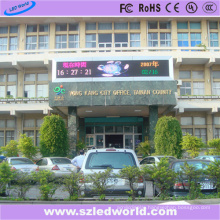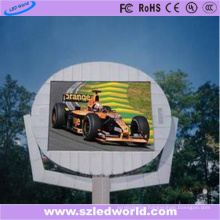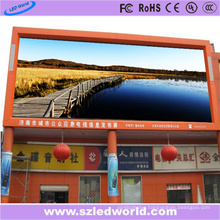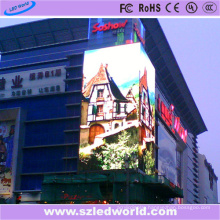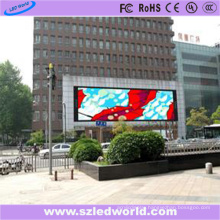Can the thermal imaging wall be blocked? Can the thermal imager really see through the wall?
2021-05-02
What is the principle of thermal imaging?
Now let's see how the camera completes this conversion. The optical machine scanning mechanism decomposes the thermal radiation pattern of the scene received by the infrared telescope into a thermal radiation signal, and focuses on the infrared detector. The detector and the image and video system amplify and convert the thermal radiation signal into a video signal, and the display is performed by the display. You can see a magical picture. Thermal imaging cameras can identify small differences in temperature within a few hundred degrees Celsius.
Thermal imaging technology is based on the fact that all objects are hot. Although many objects do not see anything from the outside, there are still hot and cold points on them. With the color on the heat map we can see the temperature distribution, red, pink for higher temperatures, and blue and green for lower temperatures.
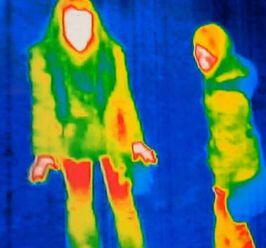
All objects that are not at absolute zero emit electromagnetic radiation of different wavelengths. The higher the temperature of the object, the more intense the thermal motion of the molecule or atom, the stronger the infrared radiation. The spectral distribution or wavelength of the radiation is related to the nature and temperature of the object. The amount that measures the amount of radiation of an object is called the emissivity. Objects with dark colors or darker surface colors have large emissivity and strong radiation; objects with bright colors or lighter surface have small emissivity and weak radiation.
The human eye can only see a very narrow wavelength of electromagnetic radiation, called the visible spectrum. For radiation with wavelengths below 0.4um or above 0.7um, the human eye can't do anything about it. The wavelength of the infrared region in the electromagnetic spectrum is between 0.7um and 1mm, and infrared radiation is not visible to the human eye. Modern thermal imaging devices operate in the mid-infrared region (wavelength 3~5um) or far-infrared region (wavelength 8~12um). By detecting the infrared radiation emitted by the object, the thermal imager produces a real-time image that provides a thermal image of the scene. The invisible radiation image is transformed into a clear image that is visible to the human eye. The thermal imager is very sensitive and can detect temperature differences of less than 0.1 °C.
In operation, the thermal imager uses optics to focus the infrared energy emitted by objects in the scene onto the infrared detector, and then converts the infrared data from each detector element into a standard video format that can be used in standard video monitors. Displayed on the tape or recorded on the tape. Since the thermal imaging system detects heat rather than light, it can be used around the clock; and because it is completely passive, there is no light radiation or RF energy, so the user's position is not exposed.
Infrared detectors fall into two categories: photon detectors and heat detectors. The photon detector directly generates an electrical effect after absorbing the infrared energy; the heat detector generates a temperature change after absorbing the infrared energy, thereby generating an electrical effect. The electrical effects caused by temperature changes are related to material properties. Photon detectors are very sensitive and their sensitivity depends on their temperature. To maintain high sensitivity, the photon detector must be cooled to a lower temperature. The commonly used coolant is Stirling or liquid nitrogen.
Heat detectors generally do not have the same high sensitivity as photon detectors but also have good performance at room temperature, so cryogenic cooling is not required.
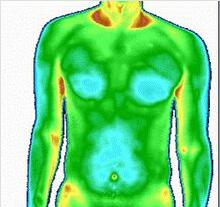
1. Infrared lens, the ordinary lens can only receive visible light, which cannot be sensed and received by the radiation, and the infrared lens can receive and converge the infrared radiation emitted by the measured object;
Second, the infrared detector, which is a very important conversion component in the thermal imager, the information collected by the infrared lens belongs to the radiation signal, and the infrared detector can convert these radiation signals into electronic signals;
Third, an electronic component and a display component, the two components are processed by converting the converted electronic signal, and converting the electronic signal into an image of visible light, so that the human eye can observe the specific appearance of the object;
Fourth, the processing software, this is a computerized part, it can analyze the image, showing the temperature of the object and the temperature difference of each part.
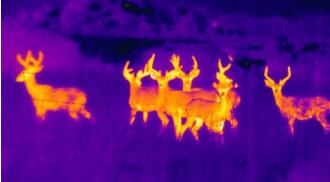
1. Universality
The objects around us can emit visible light only when their temperature is above 1000 °C. In contrast, all objects around us at temperatures above absolute zero (-273 ° C) will constantly emit hot infrared rays. For example, we can calculate the thermal infrared energy emitted by a normal person, which is about 100 watts. Therefore, thermal infrared (or thermal radiation) is the most widespread radiation in nature.
2, penetrating
The atmosphere, smoke clouds, etc. absorb visible light and near-infrared rays, but are transparent to thermal infrared rays of 3 to 5 microns and 8 to 14 microns. Therefore, these two bands are called the "atmospheric window" of thermal infrared rays. Using these two windows, you can clearly observe the situation ahead in a completely dull night or in a cloud-filled battlefield. Because of this feature, thermal infrared imaging technology provides advanced night vision equipment and an all-weather forward-looking system for aircraft, ships and tanks. These systems played a very important role in the Gulf War.
3, heat radiation
The amount of heat radiation energy of an object is directly related to the temperature of the surface of the object. This feature of thermal radiation allows people to use it for non-contact temperature measurement and thermal state analysis, providing an important means of detection and diagnostic tools for industrial production, energy conservation, environmental protection and so on.
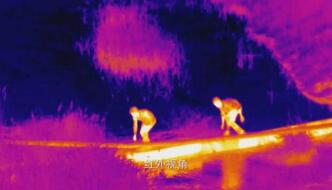
1, the distance of action is far
General infrared light products have an imaging distance of less than 100 meters. The thermal imager images the infrared rays radiated by the object, and is not limited by the ambient light and the illumination light. Generally, the telephoto thermal imager can observe more than 3 kilometers of people and vehicles of more than 6 kilometers.
2, strong concealment
It completely receives the signal passively and does not actively transmit the detection signal, so it is not easy to be discovered by anti-reconnaissance means.
3, strong penetration
Infrared heat radiation has stronger ability to penetrate fog, haze, rain and snow than visible light, so the imaging effect of infrared thermal imaging system under severe weather conditions is almost unaffected. In particular, the long-wave infrared thermal imager that acts on 8-14um has a stronger ability to penetrate fog.
4, all-weather work ability, anti-glare interference
Infrared thermal imager imaging does not rely on illumination and ambient light, but on the target and background radiation to produce a scene image, so the infrared thermal imaging system can work 24 hours a day, and will not be exposed to visible light like other night vision devices. interference. Low-light cameras cannot be imaged without ambient light.
5, can identify hidden targets
Ordinary camouflage is based on anti-visible observation. The crimes committed by ordinary criminals are usually hidden in the grass and woods. Due to the harshness of the wild environment and the visual illusion of people, it is easy to make false judgments. Infrared thermal imaging can detect hidden thermal targets through camouflage and grass leaves. The temperature and infrared radiation of human body and vehicle are generally much larger than the temperature of the vegetation and infrared radiation, so it is not easy to disguise and it is not easy to make false judgments.
6, fire monitoring
The general fire is caused by an inconspicuous igneous fire. With the existing common methods, it is difficult to find such hidden fire signs. Since the infrared thermal imager is a device that reflects the surface temperature of the object and is imaged, the infrared thermal imager is used to find the fire point through the smoke, so that early prevention and early suppression can be achieved.
7, low power consumption and long life
Laser illumination or infrared lamps require active illumination, and the power consumption of the whole machine is relatively large. In some special power supply situations, a low-power infrared camera system must be used. Since the heat dissipation problem of active systems such as infrared lamps is not well solved, the life of ordinary infrared lamps is only 1000 hours, and the life of laser illumination is about 10,000 hours, but the life of uncooled infrared thermal imagers can reach 45,000 hours.
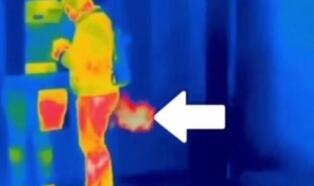
Generally speaking, it is not possible.
Thermal imaging and low-light imaging are two typical night vision techniques. They are mainly used to observe the surrounding conditions in the dark environment where the visible light is weak or no visible light. The infrared imaging is invisible to the naked eye by the object radiating or reflecting in the photosensitive element. It is displayed by electronic technology. Since any object cannot be absolutely 0 degrees (-273 degrees Celsius), all objects have infrared radiation characteristics, but infrared rays are the same as visible light, but the wavelength is larger than visible light, and the spectrum is outside the red light. Therefore, visible light cannot pass through an opaque wall.
Infrared can not naturally pass through, only high-energy particles with the characteristics of passing through (the spectrum is located at the far ultraviolet position), and the shorter the wavelength, the stronger the penetration, such as the X-ray radiation can pass through the human body, the alpha particles can pass through a certain thickness of steel plate, neutron The beam can even cross heavy metals! This shows that your worry is superfluous, the infrared will not see through the wall, and the image of the image is infrared. The hotter the image, the brighter the image, and the scene you see in peace is completely different!

Since the Second World War, thermal imaging technology has been applied to the military. Because the instrument works by thermal radiation, it allows soldiers to clearly see the enemy's whereabouts through the dark battlefield. And because it is a passive receiving system, it is safer and more concealed than visible light devices such as radio radar.
Thermal imaging technology is now widely used in everyday life. An important application is to diagnose diseases. Everyone knows that when inflammation occurs in a certain part, the body temperature will rise. The body temperature can be measured to determine whether there is inflammation, but the specific location of the inflammation cannot be determined, and the thermal imager can visually give the body temperature. The field distribution map compares the heat map of the lesion with the normal heat map to diagnose the diseased part from the abnormal change. Thermal imaging technology can also be used in the operating room. When blood flows through the artery that has just been placed, the color of the arterial tube on the thermal imager changes from gray to white, and under normal circumstances, it is difficult for the naked eye to observe whether the blood vessel is unobstructed.
Similar to the diagnosis of diseases, high-voltage power transmission and transformation of electrical components, train axle boxes, circuit boards, etc., can also be directly observed and examined with thermal imaging cameras to avoid losses caused by failure. Thermal imaging cameras can also be used for geological surveys, geothermal exploration, forest vegetation distribution, atmospheric and ocean monitoring, fire detection and rescue. The thermal imager can help rescuers find those victims who are hidden by smoke and darkness and rescue them. Thermal imaging technology can also help scientists explore the mysteries of the universe. It is expected that the application fields of thermal imaging technology will be more fully developed, promoted and popularized in the future.
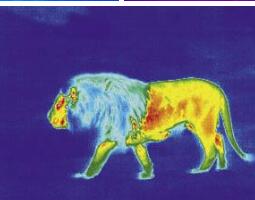
Motion wall clock is our new design. The background of the clock is moving and lively. But it is not LCD. Just the clock dial moving to make the visual effect.Motion Wall Clock is cheaper and only need 1D battery supported. If you are thinking about buying a new clock, please try this one. It will surprise you.
Size: 12 inches
Material: ABS
Weight: 0.72kg
Battery: 1D
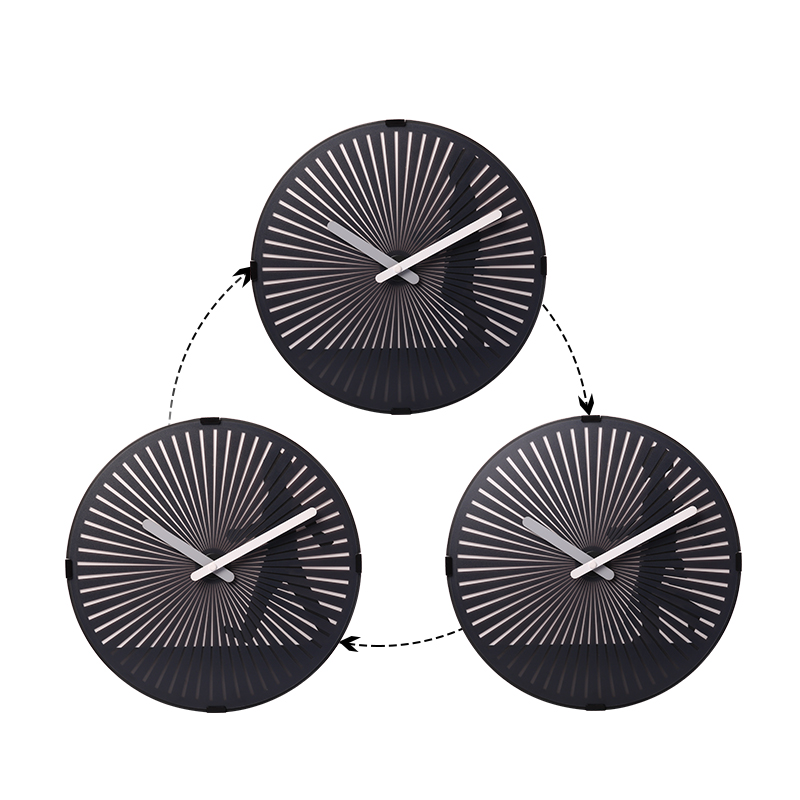
Motion Wall Clock, Hang Wall Clock, Round Wall Clock, Cute Wall Clock
Maxway Technology Co., Ltd. http://www.mk-times.com
